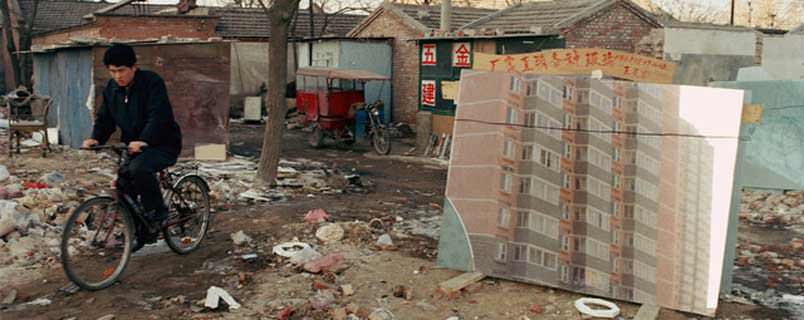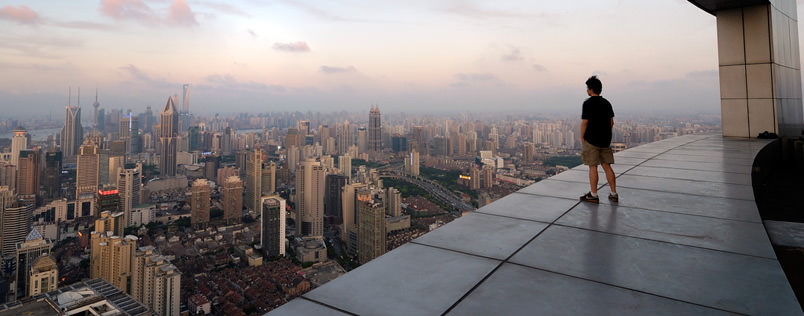 TD Original
TD Original
China: Boom or Boomerang
Dec 3, 2005 At the same time that China is recording huge increases in trade surpluses and currency reserves, deadly riots are breaking out on the outskirts of some of the country's largest cities. In this Dig, scholar Orville Schell challenges the current wisdom about China being an inevitable superpower and unstoppable economic force.Schell challenges the current wisdom that China is an inevitable superpower and unstoppable economic force. 1 2 3 4China as a Failure
If one, figuratively speaking, turns China over, however, and examines its progress not from the perspective of its strengths and the manifold visual signs of modernity that are everywhere evident in its cities, but from the perspective of its vulnerabilities, a very different picture emerges. It is one that leaves some observers wondering both about its fundamental stability and its long-term viability.
[The Economist on the dangers of China's "reheated" economy]
For starters, there is China's enormous population, approximately 1.3 billion, making it the most populous nation on Earth. It must find a way to maintain one-quarter of the world's population on 7% of its arable land. As more and more of its agricultural land is converted to industrial use, housing and suburban growth, highway and railroad rights of way, golf courses, recreation parks, airports and shopping malls, its ability to feed itself is diminished.
Moreover, as the PRC, which once militantly eschewed materialism, becomes a consumer society, the per capita consumption of natural resources is skyrocketing. This has seriously strained China's resource base, even as the nation has begun to import more and more raw materials and commodities.
In 2004, China overtook the U.S. as the globe's largest consumer of industrial and agricultural goods, and the consequences have been catastrophic for the country's environment. Whether sufficient costly technology can be brought to bear quickly enough to both allow the high rates of economic growth to continue and to begin to compensate for all the environmental degradation that has already taken place is one of the most important questions China faces.
When on Nov. 13 an explosion in Manchuria rocked a workshop at the No. 101 Chemical Plant at the Jilin Petrochemical Company, the world caught a glimpse of the kind of contradictions that will bedevil China's continuous "economic miracle." In this case, the contradiction was a particularly intractable one, namely between high-speed economic development and environmental protection.
As more than 100 tons of highly carcinogenic benzene and nitrobenzene flowed into the Songhua River, officials and the state-controlled media lied about what had happened. Only after the downriver city of Harbin (with a population of 9 million) was forced to turn off its municipal water system for more than four days, putting the city on the edge of urban panic, were the rough outlines of the disaster revealed to the public and apologies for the deception made. But no amount of apologies is capable of remedying the fact that as industrialization continues apace and generates growth rates of more than 9% every year, there is no likely remedy for this contradictory dark side of China's economic miracle.
While there is an increasing awareness of China's environmental problem, and while impressive strides have been made to understand the situation, the added increments of environmental degradation brought about by the growing population, increased consumer demand, the expanding industrial base, growing dependency on an export economy, greater human mobility and the consequence of ever larger resource use have so far meant that the desecration of the environment, as has just been so painfully made evident along the Songhua River, continues to far outpace any remedial action.
China now faces:
- Having one of the fastest-growing but least efficient energy systems in the world.
- Acid rain falling over one-third of its land mass.
- 75% of its lakes and rivers seriously contaminated and half of the water in its seven major rivers being unusable even for agriculture or industry.
- Having 16 out of the world's 20 most polluted cities.
- Very serious deforestation, especially in the foothills of the Himalayas.
- Advancing desertification.
- Precipitously dropping groundwater tables all over the dry North China Plain.
Not only have the consequences of China's high-speed industrial growth polluted its air, contaminated its rivers and abused its land, but the degradation is having costly consequences on both its public health and economy. The health costs are as yet unknowable and thus incalculable. The impact on China's GDP is estimated to be 8 to 15%.
At the same time that China's high growth rates have created winners, they have also created losers by radically expanding the gap between rich and poor. In a so-called "communist society" where many older people spent their lives fighting in "the revolution" for a more equitable society, this growing state of inequality has created dangerous tensions that have begun to manifest themselves as strikes, protests, demonstrations and riots.
Although China's leaders have talked repeatedly about the need for China to replace "the rule of men," renzhi, with the "rule of law," fazhi, the judicial system is still answerable to the Chinese Communist Party and still far from a model of due process and protection of rights, or the guardian of freedom of speech, assembly and religion, all guaranteed by China's constitution.
[Human Rights Watch's section on China]
[New York-based group Human Rights in China]
Official corruption is epidemic and growing, while injustices are rarely addressed. Because there are few checks and balances--such as a free press--on the Chinese government and business, China has ended up as 78th on Transparency International's best-to-worst ranking of corruption in 159 countries.
China currently has 134 million people 60 and older, and that figure will jump to 240 million by 2020. But since it is still converting from a system in which all healthcare and retirement benefits were handled by a person's state employer, it does not yet have a viable new pension system in place. For the elderly and unemployed, especially those whose State Owned Enterprises (SOEs) have failed, the consequences of this deficiency are dire and have led to dangerous levels of disaffection and unrest.
China's financial markets--it has two stock markets, set up in the late 1980s--have evolved into little more than gambling casinos manipulated by the rich and influential. This means that the markets remain unable to provide the country with sufficient investment capital to keep up with its pace of development. The result is that Chinese enterprises must rely either on foreign investment or capital from the state-owned banking sector, which itself is insolvent and saddled with a level of nonperforming loans that would make a normal commercial bank insolvent.
Although precise figures are impossible to come by, it is believed that government pressure on banks to continue making "policy loans" to unprofitable SOEs has resulted in the state now owning some $500 billion of uncollectible debt. Whether China's banks can find a way to write these loans off their books through state-funded asset management corporations and by "going public" without creating a banking crisis is still far from certain.
In addition, as more urban workers are sidelined or laid off from bankrupted SOEs that cannot compete with the private sector and as the houses occupied by many urban workers are taken by the state for larger projects, urban unrest is growing. And because the state fears such unrest, pressure to extend new "policy loans" to keep workers off the streets remains.
Because the party knows that so much of its ability to keep people both inside and outside of China believing in the viability of its leadership depends on its ability to maintain a favorable psychology around the idea of a "China miracle," state banks find themselves caught in a serious bind. On the one hand, they are being urged to reform and become bottom-line focused. On the other hand, the state has few other monetary tools at its disposal to fund the economy and avoid unrest.
Unfortunately, the crisis of incipient mass unrest is not limited to the cities. As the rich get richer and the poor get poorer, the divide between urban wealth and rural poverty grows; officialdom at the township, county and provincial levels becomes ever more independent from central control and increasingly corrupt; and as injustices of every kind have increased, peasant outrage has led to thousands of local demonstrations, strikes, riots and even mass uprisings that are in certain ways reminiscent of the situation out of which Mao's communist revolution initially arose.
Indeed, Reuters reported that in 2003 there were some 58,000 instances of rural protest, a 15% jump over the previous year, and the rate of such incidents has climbed each year since. These rarely reported disturbances have left hundreds dead and required the mobilization of tens of thousands of paramilitary, People's Armed Police and even People's Liberation Army soldiers. In 2004 the number of instances of unrest was reported to have risen to almost 75,000.
However, because incidents of rural unrest are rarely reported in the national press, it is difficult for Chinese (or anyone else) to get an overall sense of how widespread and how deep such disaffection among peasants actually is. But as one recent Chinese survey of the countryside, "An Investigation Into the Peasant Situation," put it: "We observed unimaginable poverty and unthinkable evil. We saw unimaginable suffering and unthinkable helplessness, unimagined resistance with incomparable silence. And, we have been moved beyond imagination by this unbelievable tragedy."
Largely because of the situation in the countryside, over the last decade China has absorbed the largest migration in human history. One hundred million to 150 million peasants have left the countryside to seek employment in the cities, where they have fueled the economy with low-cost labor. But even as they have become an important part of China's export economy, they have also added to potential instability. And, estimates are that in the next few years tens of millions more peasants will swell this already mass migration, creating new pressures in city infrastructure. Because few have such amenities as healthcare, pensions and unemployment benefits, all too many would be left destitute with no safety net should the economy slow down.
Due to the policy of one child per family and the preference for boys, only 100 girls are now born for every 147 boys, which means that poor men have trouble finding wives, that kidnapping is rampant and that gender ratios in society are out of balance.
Of all the flashpoints, there are few more dangerous than the Taiwan Strait. Beijing claims the island of Taiwan as a sovereign part of China. Taiwan views itself as de facto independent. China has 600 short-range missiles aimed at Taiwan and threatens to use force if the independence rhetoric becomes too intense. While relations with the U.S. have not been too bad of late, our commitment to militarily supply and possibly defend Taiwan against such attack could well draw us into a war with China.
And then, there is the question of Japan, whose occupation of China in the 1930s and '40s remains a lodestone for anger and nationalist sentiment in China. Moreover, it is a sentiment that the party seems glad to exploit in order to better galvanize the Chinese people against some external opponent. (The party leadership remembers 1989 all too clearly.)
It is not likely that China and Japan would go to war over the island territories in dispute, but because Japan has recently committed itself to including Taiwan as part of its own area of "strategic concern," it is possible that Japan could be brought into a clash on the side of the U.S. in the Taiwan Strait, should conflict over the independence of that anomalous island ever erupt.
Continued: Conclusion

You need to be a supporter to comment.
There are currently no responses to this article.
Be the first to respond.